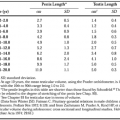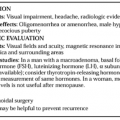RADIOPHARMACEUTICALS
Part of “CHAPTER 34 – THYROID UPTAKE AND IMAGING“
IODINE-131
Iodine-131, produced in a nuclear reactor, is selectively localized by thyroid tissue and is metabolized in the same manner as stable iodine (127I). The biologic half-life of iodine is ˜80 days in the normally functioning thyroid gland, and its physical half-life is 8 days. Because of the relatively long half-life and energetic β-emission, the thyroidal radiation absorbed dose is proportionately high.2,3 Therefore, in benign thyroid disease in which every attempt is made to keep the radiation dose as low as possible, the diagnostic use of 131I generally is limited to the measurement of thyroid uptake, a nonimaging test that requires only a small amount of radiotracer, ˜0.005 mCi. In thyroid cancer, however, larger amounts (˜2 mCi) of 131I are used to improve the ability to detect metastatic foci. Such amounts, however, are associated with a higher radiation dose and may cause “stunning” of residual thyroid tissue, so that the efficacy of a subsequent ablative 131I dose is diminished. If stunning is a concern, 123I may be used instead for the diagnostic workup (see later).4,5 and 6 Finally, and perhaps most important, 131I still has a key role in the treatment of hyperthyroidism and differentiated thyroid cancer by virtue of its selective accumulation by follicular cells and its high radiation dose to thyroid tissue (see Chap. 40 and Chap. 42).
Stay updated, free articles. Join our Telegram channel

Full access? Get Clinical Tree






